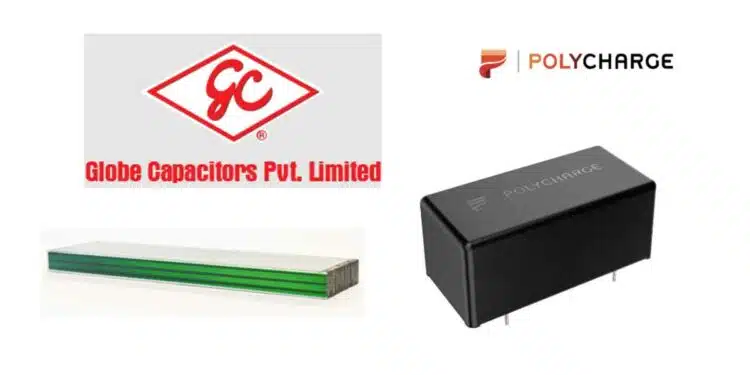PolyCharge America, Inc. announced that it has signed a Term Sheet with Globe Capacitors Pvt. Ltd., India to supply its advanced NanoLam™ film capacitor technology for use in Globe Capacitors’ finished capacitor products.
As part of this collaboration, Globe Capacitors is expected to incorporate PolyCharge’s NanoLam™ technology into its products and to use the NanoLam™ trademark in its marketing and sales efforts. The parties anticipate finalizing a definitive agreement in the near future.
“Our collaboration with Globe Capacitors represents an exciting opportunity to expand the reach of NanoLam™ products into new markets,” said Steven Yializis, Chief Operating Officer of PolyCharge. “With Globe Capacitors’ manufacturing expertise and stellar reputation within the India market, we are confident that this partnership will deliver innovative capacitor solutions that meet the evolving needs of our customers both in India and throughout the world.”
PolyCharge’s NanoLam™ technology is set to redefine the performance standards in the capacitor market, offering high energy density, improved reliability, and compact form factors, making it ideal for a wide range of applications, including electric vehicles, renewable energy systems, and industrial power supplies.
“Partnering with PolyCharge allows us to bring cutting-edge technology to our customers, enabling us to offer superior performance in our finished capacitor products,” said Sanjay Agarwal, President of Globe Capacitors. “This Supply and Licensing Agreement strengthens our product portfolio and reinforces our commitment to delivering high-quality, advanced solutions in the power electronics industry.”
The parties have committed to a joint press release and co-marketing initiatives to promote the integration of NanoLam™ technology into Globe Capacitors’ product line. This agreement is expected to provide a foundation for future collaboration on next-generation capacitor products, ensuring both companies remain at the forefront of innovation.
































